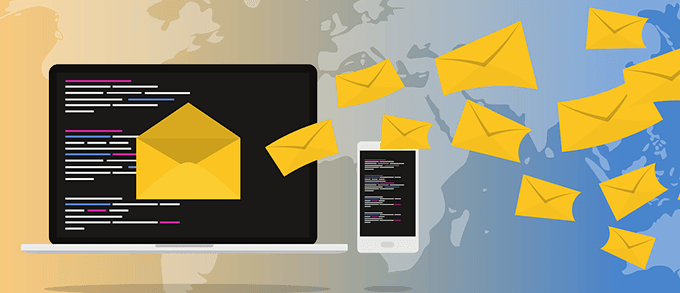Exchanging emails has usually been a safe matter and the providers take care of the security of the emails you send and receive. Email encryption, however, is something that may not be available in all email services you use. If you want to protect your emails further, you may want to use it in your email apps.
As long as you are using a Mac, you can send encrypted emails from the stock email app on your computer.

The built-in Mail app allows you to encrypt your emails before they are sent. This encryption process actually requires an email certificate to be installed on your Mac. This certificate can be obtained from any of the available online vendors. There is also a free service that gives you this certificate at no cost.
Once everything is set up, you can send encrypted emails from the Mail app on your Mac. The content of these emails will be encrypted, which means that if anyone can access these emails, all they will be able to read is encoded text on the screen that has no meaning.
Get a free email encryption certificate for your email address
The first thing you need to do is get a certificate from one of the online providers. This certificate will then be used to validate the emails you send from the Mail app on your Mac.
While you can use any service to get a certificate, currently the one mentioned below offers you a free one to use for your personal emails.
- Open a browser and go to the Actalis website. Once you are there, find and click on the link that says Free S / MIME certificates.

- A form to request a certificate will appear on the screen. You have to fill it in with your personal information. Enter your email address in the E-mail field and click Send verification email button.

- You will receive an email with a code. Copy the code from your email.

- Go back to the module page and paste the code into the file Verification code field. Then enter the captcha, check the required boxes and click Send the request At bottom.
- The following screen will display the password for your certificate. You want to write it down because it will no longer appear.

Your request for an e-mail certificate has been sent. You will shortly receive an email with your certificate attached.
Install the free email certificate on your Mac
Once you receive the certificate, you’ll need to install it in the Keychain app on your Mac. It will then allow you to use it in the Mail app to send encrypted emails from your Mac.
- Download the certificate .zip file from the email and extract its contents to your Mac.
- Double-click the extracted certificate file to install it on the machine.

- It will ask you to enter the password for the certificate. Enter the password you wrote down when requesting the certificate. So hit OK to continue.

The certificate will be added to the app, however you will not receive any onscreen notification.
Confirm that the certificate was actually installed in the keychain
If you want to verify that the installation process went well for the certificate, you can do so by launching Keychain and accessing your certificate.
- Click on SpringboardTo seek Keychain accessand click on it. It will open.

- In the main interface, select My certificates from the left sidebar and will allow you to view the installed certificates.
- You will see the newly installed email certificate in the right pane.

Indicates that the certificate has been successfully installed on your Mac.
Send encrypted emails from the Mail app on your Mac
Now that the certificate is installed and you have verified it, you are ready to start sending encrypted outbound emails from the Mail app on your computer. There is no further setup and all you have to do is compose a new email and send it.
If you already have the Mail app open, you want to close it before following the steps below.
- Start the Mail app using the preferred way on your Mac.

- To compose a new encrypted email, click File top menu and select the New message option.



The email you just composed will first be encrypted using your certificate and then sent to your recipient.
Send an unencrypted email from your Mac
It is not necessary to send encrypted emails just because the certificate is installed on your computer. You can still send and receive regular emails.
- Just compose a new email and don’t enable the lock and check mark icons.

Your email will then be sent as a normal email with no encryption applied.
Remove the email encryption certificate from your Mac
If you no longer want to use your certificate, or if you intend to replace it with a new one, you may want to remove it from your Mac.
- Start the Key holder app.
- Locate your certificate as you did in one of the previous sections.
- Right-click the certificate and select Delete.

You will no longer be able to send encrypted emails from your Mac.